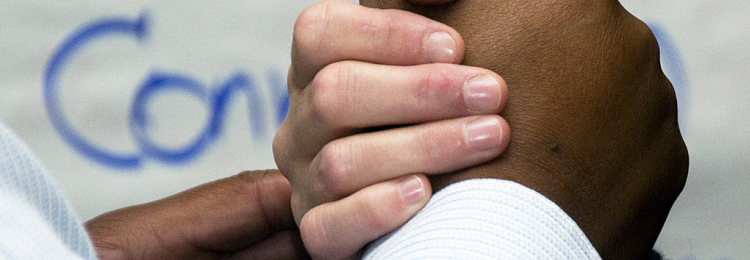
Study Shows How Social Relationships Need to be Taken as a Point of Assessment in Evaluating Health Promotion and Health Risks
“Growing evidence suggests that the quality and patterns of one’s social relationships may be linked with a variety of health outcomes, including heart disease,” says Thomas Kamarck, professor of psychology at the University of Pittsburgh. “The contribution of this study is in showing that these sorts of links may be observed even during the earliest stages of plaque development (in the carotid artery) and that these observations may be rooted not just in the way that we evaluate our relationships in general, but in the quality of specific social interactions with our partners as they unfold during our daily lives.” Given the size of the effect in the study and the relationship between carotid artery plaque and disease, the findings indicate that those with marital interactions light on the positive may have an 8.5 percent greater risk of suffering heart attack or stroke than those with a surfeit of good feelings. Taken from the article “Lack of Wedded Bliss Linked to Heart Attack Risk” by Joe Miksch-Pittsburgh, University of Pittsburgh. Image: "Marriage Train" by Angie...
Study Shows How Diversity and Inclusion Are Crucial to Gain the Perspectives and Ideas that Foster Innovation in the Workforce
“Fostering Innovation Through a Diverse Workforce” is based on an exclusive survey of 321 executives at large global enterprises ($500 million-plus in annual revenues). All respondents had direct responsibility or oversight for their companies’ diversity and inclusion programs. The study was sponsored by AT&T, L’Oréal USA, and Mattel. According to the survey, a diverse and inclusive workforce is necessary to drive innovation and promote creativity—85% of respondents agreed (48% strongly so) that diversity is crucial to gaining the perspectives and ideas that foster innovation. As importantly, more than three quarters indicated that their companies will put more focus over the next three years to leverage diversity for their business goals, including innovation. “Companies have realized that diversity and inclusion are no longer separate from other parts of the business,” said Stuart Feil, editorial director of Forbes Insights. “Organizations in the survey understand that different experiences and different perspectives build the foundation necessary to compete on a global scale.” –Taken from the article “Forbes Insights Study Identifies Strong Link between Diverse Talent and Innovation” by Debbie Weathers. Image: "2011 Diversity Conference" by Oregon Department of...
How in Order to Value Our Relationships, We Need to Invest in Them
The more time, effort or work you put toward someone, the more you’re personally invested in them, and the more you like them and want it to work out. Do you think this principle of liking people more via investing more in them can be applied in all social relationships, not just relationships among couples? If so, how? We look forward to your comments below… Image: "Mark Zuckerberg has changed our lives" by Ulisse...
Warning: 1 Act of Kindness Per Day Doesn’t Make You Happier. But 5 Acts of Kindness Per Day Just Might
In 2005, a study was conducted proving that engaging in deliberate acts of kindness leads to increased well-being, with one caveat: it must be done in such a way that exceeds the individual’s propensity to be kind. Specifically, engaging in an act of kindness per day, for a week, will not lead to well-being benefits, but doing, say, five acts of kindness in a single day, does. Why is it that just doing little acts of kindness doesn’t really make you feel that much better? Like anything that’s positive for you, eventually you’re going to start taking it for granted over time, and it’s not going to make you as happy as it once did. There’s a term for this, and it’s called ‘hedonistic adaptation.’ Now there’s a trick to scratching this itch of the human condition, and it’s to actively plan out experiences that throw off the pattern. So why don’t you try it for yourself? Go out and fill a day with doing the world some good. Image: "Friendship" by Pink Sherbet...
